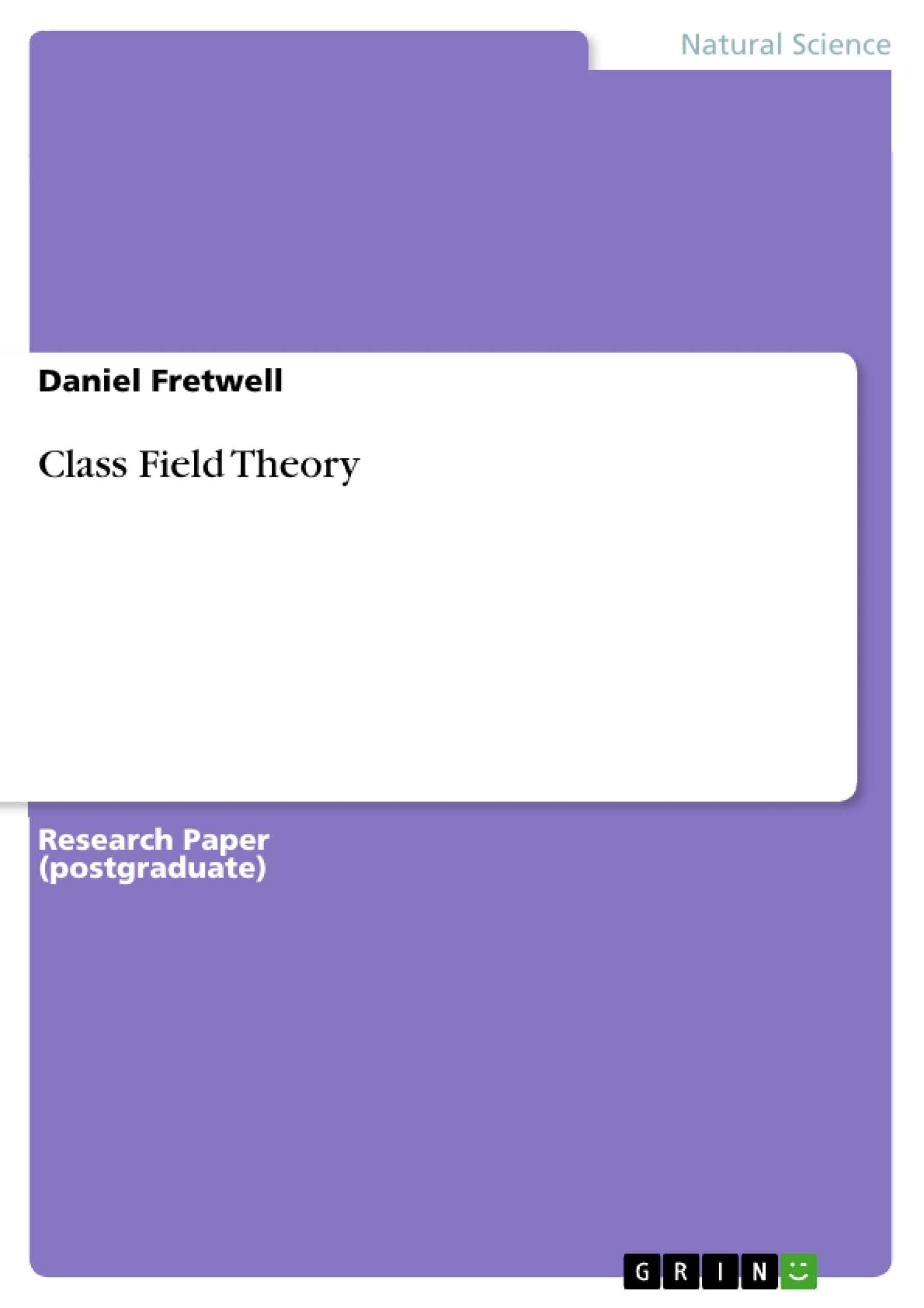This is the first in a two part series of papers establishing (with proof) the main theorems of global class field theory. We first recap some of the main ideas of algebraic number theory, using these to develop the Artin reciprocity law and the Takagi existence theorem both in terms of ideals and ideles. Finally, we use the Hilbert class field in order to study the well known problem of which prime numbers can be represented in the form x^2 + ny^2 for integers x,y and positive integer n.
Inhaltsverzeichnis (Table of Contents)
- Introduction
- A brief survey of algebraic number theory
- The ideal class group
- Fractional ideals
- The ideal class group
- The decomposition group and Frobenius
- Galois theory of finite fields
- A Galois group action
- The Artin symbol
- Class field theory
- Class field theory in unramified abelian extensions
- Loosening the unramified condition
Zielsetzung und Themenschwerpunkte (Objectives and Key Themes)
This project aims to introduce the reader to the theory of class field theory, a central area of 19th and 20th Century mathematics focusing on the classification of finite extensions of number fields. Specifically, it explores the relationship between generalized ideal class groups and Abelian extensions, culminating in the concept of ray class fields as maximal Abelian extensions. The project avoids rigorous proofs, focusing on conceptual understanding and laying the foundation for further study.
- The interplay between generalized ideal class groups and Abelian extensions
- The concept of a modulus and its role in smoothing the correspondence
- The existence and properties of maximal Abelian extensions, specifically ray class fields
- The importance of the Hilbert class field and its applications
- The connection between class field theory and unique factorization in number fields
Zusammenfassung der Kapitel (Chapter Summaries)
- Introduction: This chapter provides a brief overview of class field theory, highlighting its role in classifying finite extensions of number fields, particularly those with Abelian Galois groups. It introduces key concepts such as unramified Abelian extensions and the Artin map, emphasizing the correspondence between generalized ideal class groups and Abelian extensions.
- A brief survey of algebraic number theory: This chapter revisits fundamental concepts of algebraic number theory, including number fields, rings of integers, and the norm. It discusses unique factorization into prime ideals and the notion of ramification, setting the stage for the development of class field theory.
- The ideal class group: This chapter introduces fractional ideals, which are more general objects than ordinary ideals. It establishes the group structure of non-zero fractional ideals and defines the ideal class group as a quotient group. The significance of the ideal class group in measuring the failure of unique factorization is explained, and the concept of class number is introduced.
- The decomposition group and Frobenius: This chapter explores Galois theory in the context of finite fields, focusing on the Frobenius automorphism. It then introduces the concept of ramification in number field extensions and defines the general norm of a prime ideal, setting the groundwork for the subsequent discussion of class field theory.
Schlüsselwörter (Keywords)
Key concepts and terms in this project include: number field, ring of integers, Galois group, Abelian extension, ideal class group, fractional ideal, class number, ramification, decomposition group, Frobenius automorphism, Artin map, and ray class field.
- Quote paper
- Daniel Fretwell (Author), 2011, Class Field Theory, Munich, GRIN Verlag, https://www.hausarbeiten.de/document/175757


